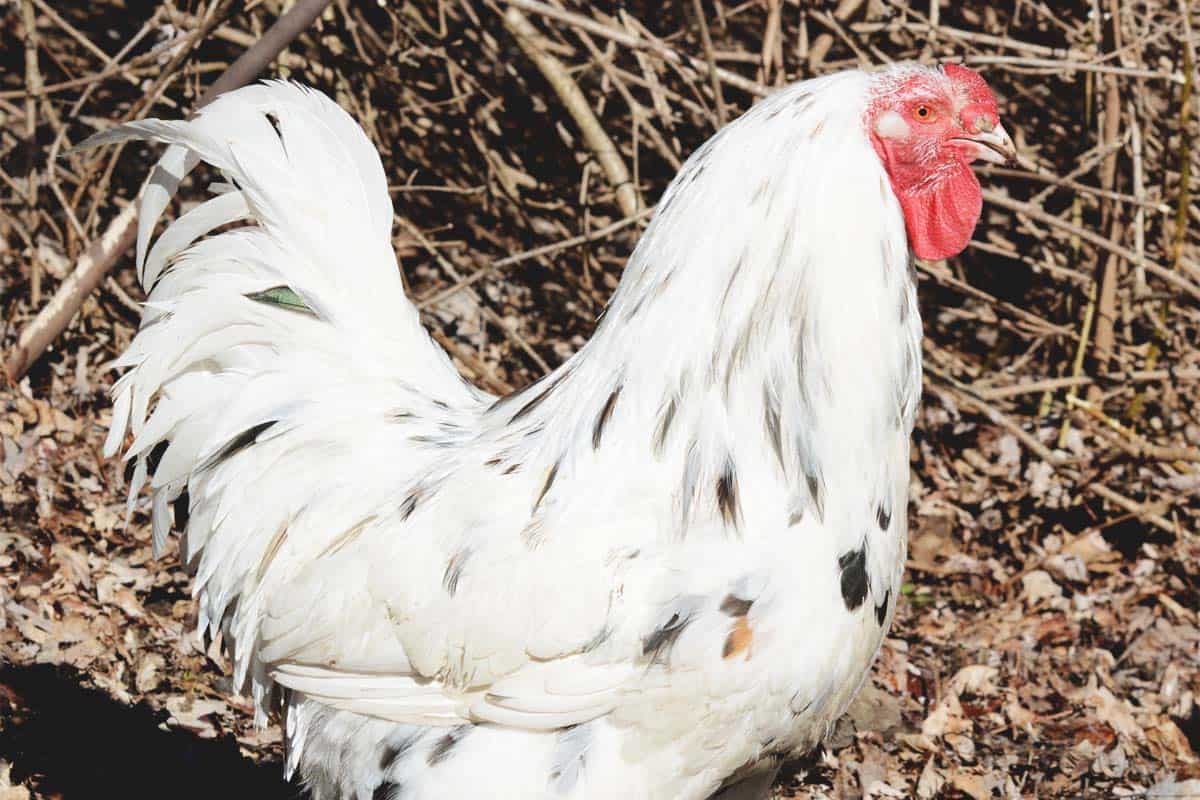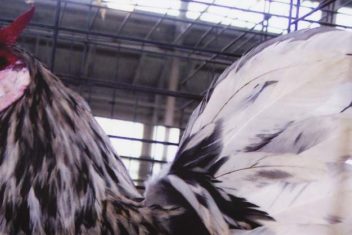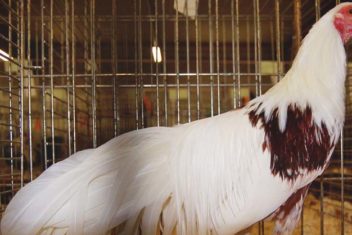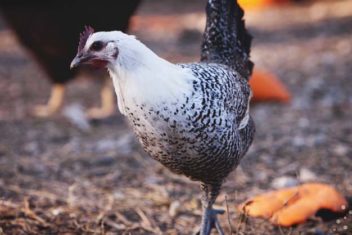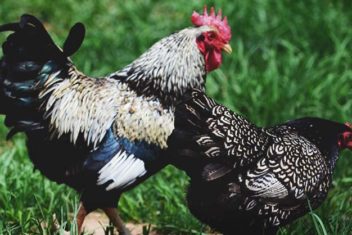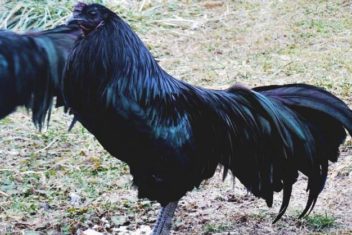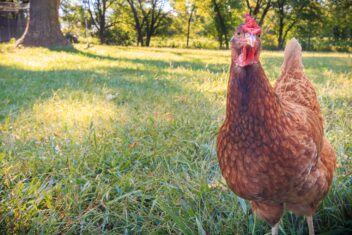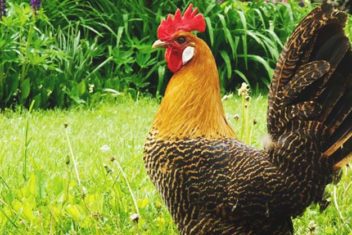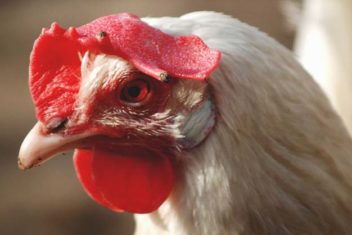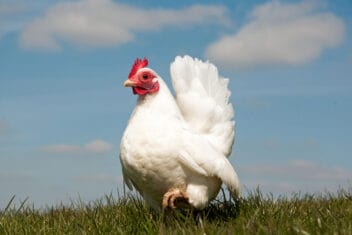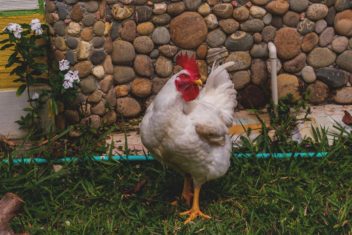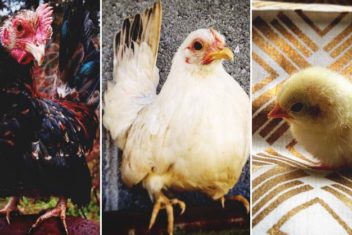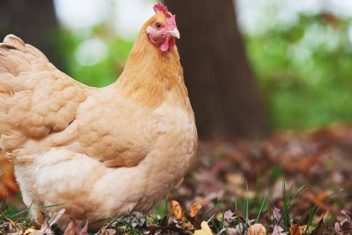For Chantecler Chickens to have so many positive qualities and characteristics that can’t be found in many other breeds, this breed doesn’t have much popularity.
Chanteclers were bred to be efficient winter layers as well as able to withstand the cold easily. These attributes make the Chantecler an exceptional choice for those in colder climates.
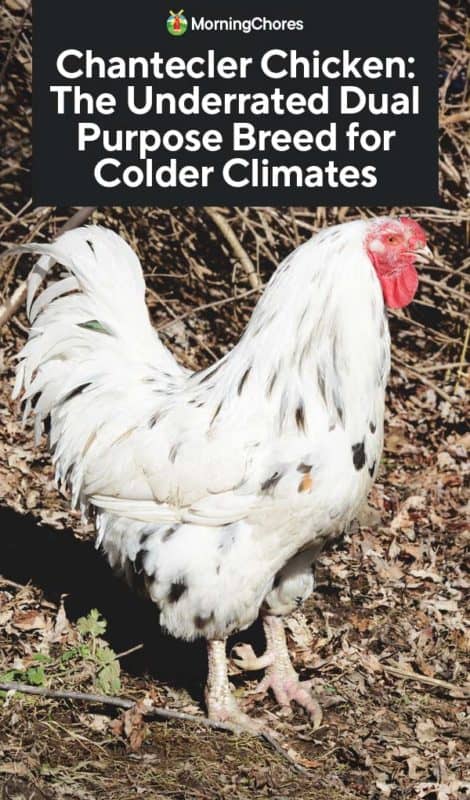
About Chantecler Chickens
Chanteclers were the first breed to originate from Canada, making them a unique chicken to have around. Ideas for breeding a Canadian chicken came to Brother Wilfred Chatelain, who ended up supervising the breeding process in the following years.
The breeding process for Chanteclers was slow and deliberate, involving several breeds and ten years of work before their introduction to the public. Dark Cornishes, Rhode Island Reds, White Leghorns, and White Wyandottes went into the making of the first White Chantecler.
After thirteen years of dedicated work, the White Chantecler was admitted into the American Poultry Association Standard of Perfection in 1921. Fourteen years later, Partridge Chanteclers were admitted into the Standard of Perfection as well.
Chantecler Characteristics
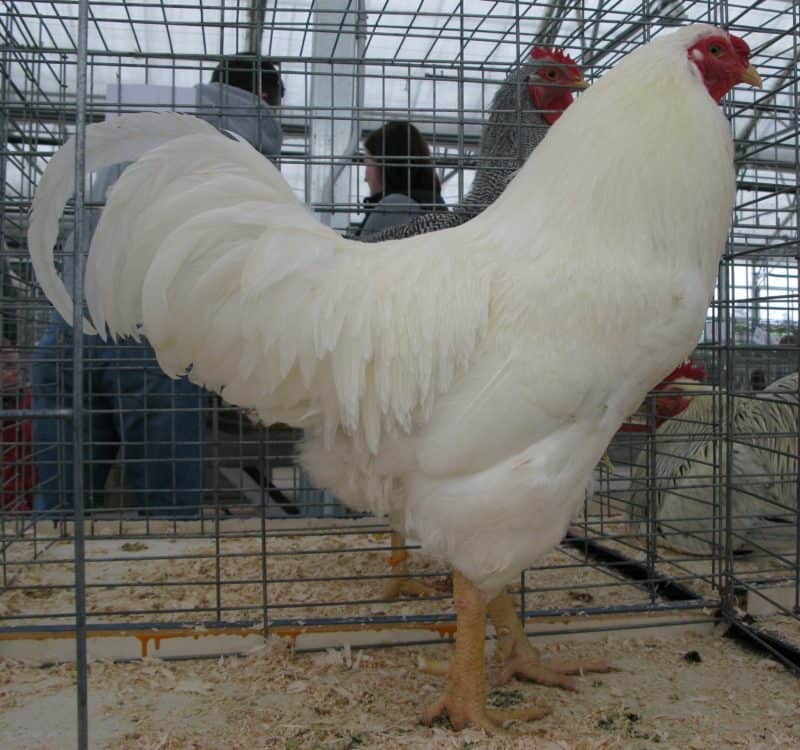
1. Size and Weight
Since Chanteclers are a dual-purpose breed, they are a larger chicken to make a decent meat producer. Roosters generally weigh in somewhere around 9 pounds when fully grown. Hens are naturally a bit smaller, tipping the scales around 7 pounds at full-grown weight.
2. Temperament
One important characteristic of Brother Wilfred Chatelain was a calm and peaceful temperament. As one of the gentlest breeds out there, this chicken certainly lives up to his standards. In addition to their friendly dispositions, hens can make excellent and nurturing mothers.
3. Egg Production
Despite having a tendency to go broody, Chantecler hens can still produce an impressive amount of eggs every year. A single Chantecler hen can lay over 200 eggs per year.
Due to being bred to withstand harsh winters, this is also a breed that can be counted on to keep laying eggs when other hens stop laying because of cold weather.
4. Meat Production
While there are dual-purpose breeds out there that may produce a bit more meat, the Chantecler is definitely a well-rounded breed. It’s been reported that fully grown Chanteclers can consistently produce 5lb carcasses.
White Chanteclers are the best color variation to raise for meat due to having white pinfeathers. White pinfeathers leave a dressed carcass looking clean and neat.
Taking Care of Chantecler Chickens
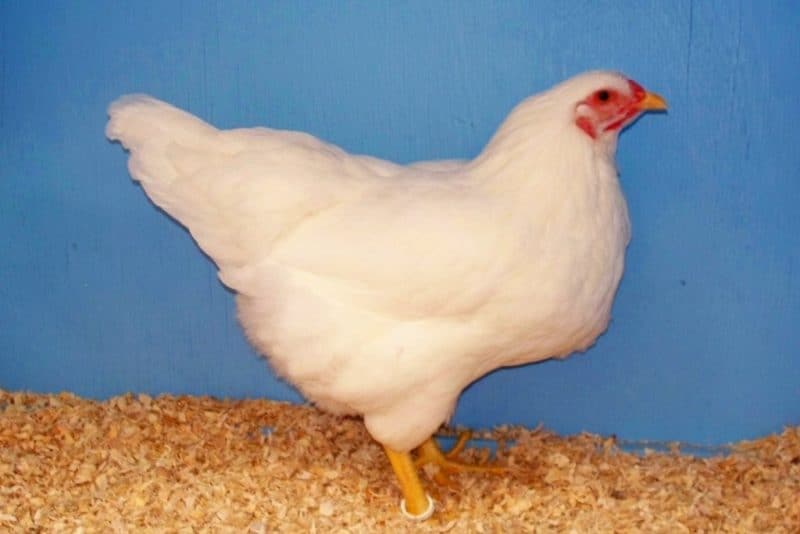
1. Feeding and Nutrition
If you’re starting off with chicks, you’ll need to acquire a good quality chick starter to feed them for the first several weeks of life. Around 12-14 weeks of age, you can transition your growing birds to a good laying feed.
Occasionally there will be cases when your laying hens will not receive enough calcium and result in laying soft-shelled eggs.
If this happens, provide calcium supplements such as crushed up eggshells or oyster shells to give your hens a nutrient boost. Read more about soft-egg issues and how to resolve it.
2. Housing and Fencing
Chanteclers can be content both in confinement and free-ranging. If you choose to free-range your birds, Partridge Chanteclers may be a better color variety to own due to the fact they camouflage better against the landscape than a white bird.
All chickens need a good house to retreat to for safety and protection. For Chanteclers, it’s best to provide a minimum of 4 square feet per bird inside the chicken coop. If you choose to keep your Chanteclers confined to a run, provide a minimum of 10 square feet per bird.
3. Health Issues and Care
The Chantecler certainly hits the mark for a robust and hardy bird! When the breed was being created, special care was put towards making sure that the resulting chicken would be strong and healthy.
For many birds, frostbite on combs and wattles is a real issue in colder climates. Chanteclers are bred to have small combs and wattles in order to avoid getting cases of frostbite. This attribute makes Chanteclers an excellent choice for those in frigid climates.
4. Breeding
Since Chanteclers are such a good breed for meat and egg production, many sustainable farmers like to raise their own chickens instead of buying repeatedly when they need new stock. Chantecler hens make it easy to breed for the next generation because of their aptitude to set and raise chicks.
Breed Alternatives
1. Wyandottes
For those after cold hardy, dual-purpose chickens, the Wyandottes are another viable option. Wyandottes might not have egg production quite as high as Chanteclers, but Wyandottes offer more meat to compensate.
Another thing that makes Wyandottes favorable is their gorgeous feather patterns that add beauty to every farm.
Chantecler Fun Facts
1. The Chantecler is the only breed to have been developed by a member of a monastic order.
2. ‘Chanter’ means “to sing” and ‘clair’ means “bright” in French. Put together, the breed’s name means ‘To sing brightly.’
3. There’s actually a third color variation of the Chantecler that hasn’t been recognized by the American Poultry Association yet. The Buff Chantecler has been around since the 1950s.
This is such a useful breed, it’s a wonder it doesn’t have more popularity than it actually does. If you’re a sustainable farmer or homesteader needing a chicken that can keep well in the cold, this breed is the perfect match for you and your farm!
